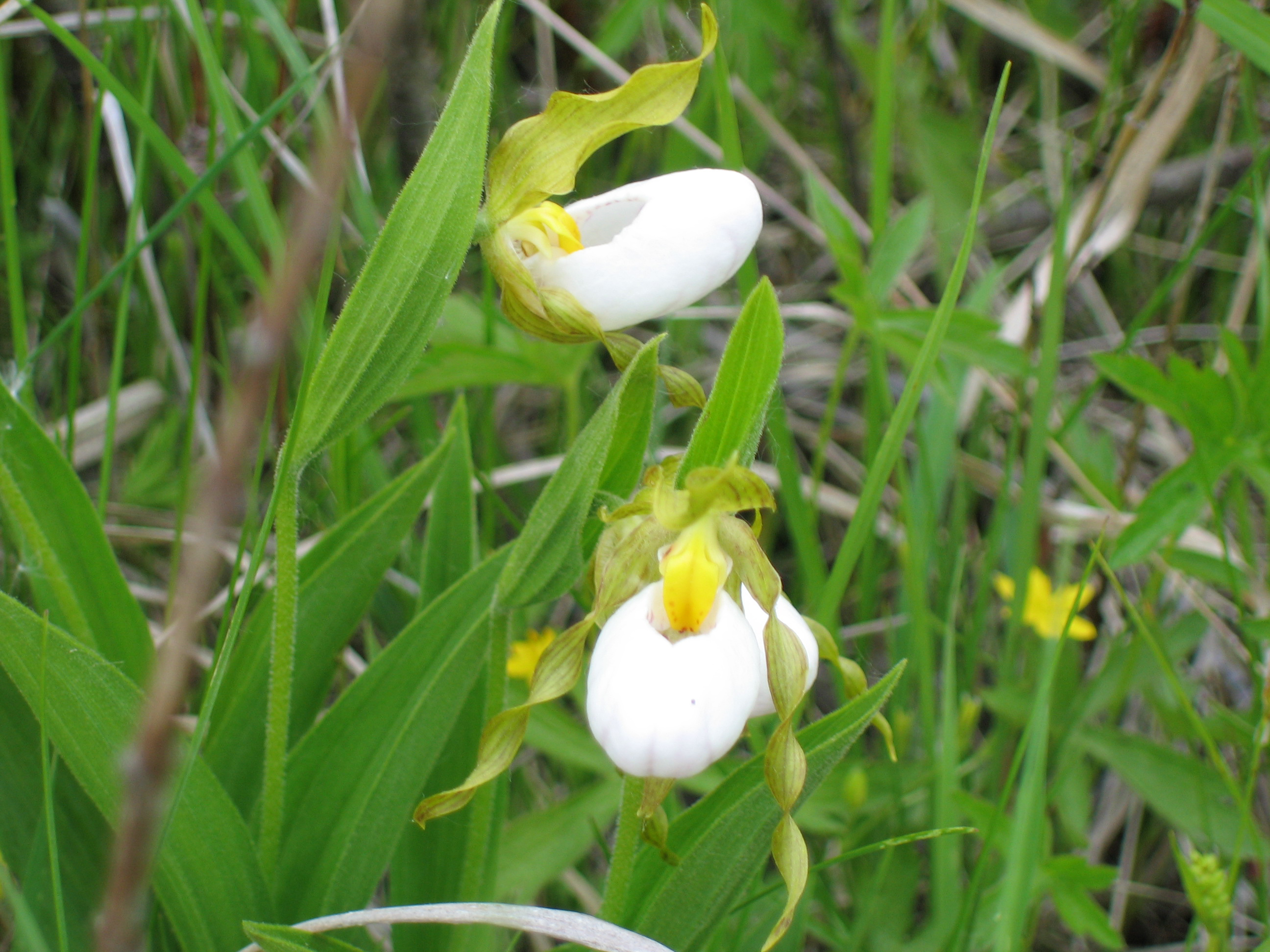By Sarah Hagen, Spatial Ecologist, LANDFIRE
It’s a sunny midsummer morning in south central Wisconsin. From my position on the bluff overlooking a large prairie and wetland complex, I can hear several varieties of songbirds in the trees above me. To my right, high up in the old, gnarled burr oaks, I hear the squawking and drumming of a flock of red-headed woodpeckers. The scene above and below me is lush and green and idyllic, but that’s not what I’m thinking about.
I’m thinking about how it’s not even ten in the morning and the temperature has already risen above 85°F. I’m thinking about how I just slid down a 60+° slope through a patch of poison ivy for what feels like the thousandth time in the past two hours. I’m thinking about how I can still feel the cuts on my legs from my trek through the honeysuckle and blackberries. I’m thinking about the chemical burns on the side of my neck that I was rewarded with when I failed to dodge a wild parsnip as it careened toward my face a week ago. I’m hot and I’m tired and I’m dirty and I still have six hours of this ahead of me before I climb into a car, drive 45 minutes back to my apartment, take a shower, eat a mountain of food, and fall asleep by 10:00 p.m. while my roommates head out to have all the fun that summer in Madison can offer. At 6:00 a.m. my alarm will ring and I’ll wake up and do it all again.
 Prairie restoration, as with most forms of conservation and land management, is rarely as glamorous as friends and family may think it is. It requires long hours in long sleeves and long pants under the blazing summer sun with little to no cover to speak of. It requires trekking through sometimes difficult terrain to places inaccessible by vehicle, shovel slung over your shoulder as you climb up hills and through brush—most of which has some manner of thorns—while insects buzz around your head and climb at your feet.
Prairie restoration, as with most forms of conservation and land management, is rarely as glamorous as friends and family may think it is. It requires long hours in long sleeves and long pants under the blazing summer sun with little to no cover to speak of. It requires trekking through sometimes difficult terrain to places inaccessible by vehicle, shovel slung over your shoulder as you climb up hills and through brush—most of which has some manner of thorns—while insects buzz around your head and climb at your feet.
The summer I spent working in prairie restoration in southern Wisconsin was one of the most difficult of my life. While friends were staying out late and sleeping in and celebrating their recent completion of undergraduate study, I was waking up early and collapsing into bed, sunburnt and aching and exhausted, a few hours after I arrived back home. Never a morning person, I grumbled at the 6:00 a.m. wakeup call and the prospect of another day of grueling work under a relentless sun.
That summer was also one of the most rewarding of my career. I learned more about ecology—bird and plant identification, care of the land, the history of the land—in a few short weeks on the prairie than I did in four years of top-rate university education. I had more wholly rewarding experiences standing amidst the grasses than I did anywhere else that my travels had taken me. I still recall the day that, while pulling garlic mustard deep in a forest, I stumbled upon a fern grove. It was the sort of magical place that you picture in your mind while reading old fairy tales. I half expected gnomes and sprites to be running about beneath my feet.
 I remember uncovering a nest of newly hatched wild turkeys, the little ones all striped and fuzzy as they peeped and scurried about until their mother returned. I remember the calls of the Sandhill cranes as they flew gracefully over my head. I remember the rare orchids and the flocks of red-headed woodpeckers becoming an almost commonplace daily fixture.
I remember uncovering a nest of newly hatched wild turkeys, the little ones all striped and fuzzy as they peeped and scurried about until their mother returned. I remember the calls of the Sandhill cranes as they flew gracefully over my head. I remember the rare orchids and the flocks of red-headed woodpeckers becoming an almost commonplace daily fixture.
Prairie restoration is difficult. You’re hot and tired and dirty for long hours, day after day. There’s always more work to be done. It’s easy to give up on the grasslands, to decide that it’s hopeless. It’s easy to wonder why you’re doing this anyway.
But for every day I felt miserable and sorry for myself, there was a moment where a rare breeze blew around me and I put my shovel down for a moment, looked at the seemingly endless fields of big bluestem waving in the wind, listened to the birds singing all around me, and thought, “There’s nowhere else I’d rather be.”